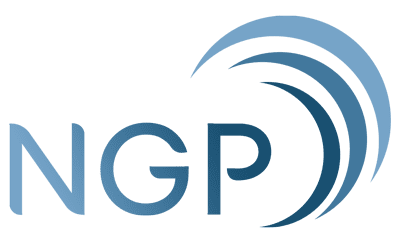Visuals are about as important as in-depth text insights. Decision makers in fast-paced businesses, for instance, prefer reports with information that can be grasped in an instant—that is, with visual accompaniment. Online course takers may also say they are ‘visual learners’ and prefer modules with visual examples. Companies issuing sustainability reports have recently done so with graphics in mind. Quick-hit, accessible, visual communication that sends a precise message.
Enter data visualization.
Data visualization is a medium that gathers complexities of information and data and summarizes it in a visual way to provide clarity on any given topic. In the brand context, data visualization promotes a better understanding of industry trends, customer patterns (e.g., high activity hours, purchasing preferences), and performance gaps.
These “visuals” are commonly illustrated as charts, maps, graphs, and other graphics of choice.
And these visuals help your brand or organization tell a compelling story.
The importance of data visualization as a storytelling tool
Figures, concepts, findings? They are mostly abstract and require a certain level of expertise to understand at face value. When this data—these stories—are supplemented with visuals, readers can better appreciate them as they come to life.
Studies have also shown that readers are able to learn and retain information better with visuals. According to behavioral scientist and Stanford professor Jennifer Aaker, stories are 22 times more likely to be memorable than a simple statement of fact.
Wharton marketing professor Deborah Small also ran a study that revealed that, that for organizations aiming to raise substantial funds for charitable causes, emotional narratives stand a better chance at working than plain data. Heart over head! Narratives naturally break down the wall of anonymity and distance, immersing the audiences in an “experience,” now considered familiar and approachable. Thus, they become more attached to the “topic” enough to vividly recall it.
And when these stories are better visualized with pictures, illustrations, and infographics, the message is sent and the information is retained better. Remember: effective data storytelling involves clarity, engagement, and relevance. It’s about weaving data into a narrative that captures the audience’s attention and leaves a lasting impression.
Here’s how your brand can get started on data visualization to communicate complicated information better:
- Choose the right format
Each visualization format serves a distinct purpose: a line graph is perfect for exhibiting a certain “trend” over a period of time, while a flowchart is more applicable for illustrating steps to follow. Choose your visualization format according to the message you want to send.
To keep viewers engaged, and to help them better understand the data you want to convey, consider animations. For instance, if you wish to show a growing trend in mobile phone users over time, consider a bar graph or line graph that rises and falls as the numbers grow and shrink.
- Use color theory
Color choices can also make or break the overall presentation of data. Consider how organization reports tend to limit the use of color for large datasets. Colors can influence emotion, shape perception, and even help in understanding and retaining information. Brush up on basic color theory and color representation. Find the colors complimentary to your brand. Presenting data in this pleasing way may help improve data absorption and readability, too.
- Balance simplicity and complexity
As you use data visualization to simplify text-heavy data, steer clear of complicating the graphics. Avoid cramming too much text in one graphic, and use simple fonts for larger bodies of text. Use negative space wisely to help lead readers’ eyes to relevant pieces of information. To keep things interesting, sprinkle some complexity and use different, bolder fonts and complimenting colors for your headers and calls to action.
- Consider accessibility
As you translate your data into actionable insights via visuals, consider every type of user who may come across your content. Laymanize terms as much as possible; provide timely, real-world applications and examples to help readers better appreciate the material; have options for text-to-speech or alt-text; always include closed captions in videos, and so on! This best practice shows you’re not just willing to publish data—you’re willing to share it for more people to benefit from.
Data visualization isn’t the future—it’s the now
Data visualization is a powerful storytelling tool that transforms complex data into compelling narratives. By understanding it, brand storytellers can leverage visual data to inform, engage, and inspire their audiences. As we look to the future, the evolving landscape of data visualization promises even greater opportunities for creative and impactful ways to Connect Your Story.
Work with NGP-IMC to help gather and analyze data and transform it into a story that delivers unforgettable impact.

Gayle is a copy editor and contributing writer for NGP-IMC, covering all the latest buzz around PR and digital marketing. Previously, she’s penned personality-packed ad copies, headlines, print journals, and articles for industry-leading brands and publishers such as foodpanda, Under Armour, Klook, and more! Additionally, she’s profiled Olympic gold medalist Hidilyn Diaz, developed scripts for South Korea’s SK-Zic and interviewed female riders to shed light on their experiences at the forefront of dismantling gendered expectations within the male-dominated delivery space.


